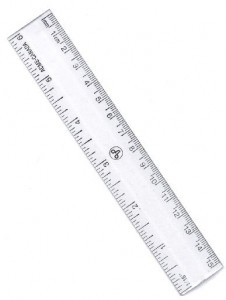Thinking about Intervals and Nature
 As the new year and decade begin, I’m thinking about intervals. Most instantly, a year seems to be a more natural interval than a decade. Roughly the same things happen each year. There will be a shortest and a longest day and the air will grow warm and then cool again. The arbitrary part of a year is in its stopping/starting point. Nothing is magical so far as I can see about where we choose to end one year and begin the next. If anything, I’d prefer to wait until mid-February or so to conclude all of last year’s business and begin anew.
As the new year and decade begin, I’m thinking about intervals. Most instantly, a year seems to be a more natural interval than a decade. Roughly the same things happen each year. There will be a shortest and a longest day and the air will grow warm and then cool again. The arbitrary part of a year is in its stopping/starting point. Nothing is magical so far as I can see about where we choose to end one year and begin the next. If anything, I’d prefer to wait until mid-February or so to conclude all of last year’s business and begin anew.
A decade in the natural world seems to mean not much. But what about in a lifetime? Age 0-10, age 10-20, age 20-30, and so–these seem a bit more adequate as era-markers. Even in the 1800s decades were given sobriquets. There were the Hungry Forties (think potato famine) and the Gay Nineties (aka the Naughty Nineties; aka the Mauve Decade). But not before that; what about modernity made the decade seem like a definable, describable, identifiable interval?
Day is perhaps the truest time-interval. The sun will rise and set. While a year is a real thing, a felt thing, it is usually too drawn out and diffuse to pinpoint or summarize in a word. If you say that 2003 was a good year, I will know that it took the space of time for you to make that judgment. Mid-year, there is no telling. But a day has a character and a shape detectable even as it passes. It is defined by its largest moment. It can be remade no more than once, and the next day may be something else entirely. “Weeping may endure for a night, but joy cometh in the morning” (Ps. 30:5).
These are time intervals. Modern space intervals mean very little (inch, mile, pint) and exist only for the purpose of standardization, ratio.
Then there are language intervals.
